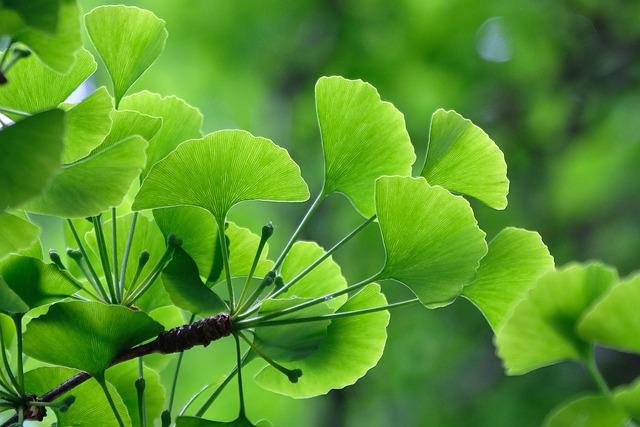
The mother tincture of ginkgo, with its anti- platelet, antithrombotic, capillary-protective, antioxidant and anti-allergic action, is used for disorders of the circulatory system, to promote memory and concentration. Let’s find out better
Properties of ginkgo mother tincture
Ginkgo biloba leaves contain terpenes, (ginkgolide B); polyphenols and flavonoids (ginketol, isiginketolo, bilabetolo, ginkolide). These active ingredients give the plant an anti-platelet, antithrombotic, capillary-protective, antioxidant and anti-allergic action.
The mother tincture of ginkgo is widely used in disorders of the circulatory system, to improve the tone and elasticity of the walls of veins, arteries and capillaries, and therefore is recommended in the treatment of neuropathies caused by diabetes, in macular degeneration of the retina, and other circulatory system disorders, such as hemorrhoids, varicose veins and capillary fragility. Furthermore, this preparation has the ability to prevent the formation of thrombus in blood vessels; decrease capillary permeability; and thin the blood, because it decreases its viscosity.
The hydroalcoholic extract of the plant also helps oxygenation and nourishment of the tissues, with beneficial effects, in particular, on the blood circulation of the brain tissues. In fact, due to the ability to promote a correct distribution of oxygen and glucose to the brain, it increases mental acuity, concentration, short-term memory, and cognitive faculties. For this reason it is particularly suitable for students; while in the elderly it contrasts the phenomena of atherosclerosis and slows the progression of Alzheimer’s disease. Its intake is in fact recommended to counteract the effects of aging, as it protects the brain and nervous system from damage caused by free radicals.
The mother tincture of ginkgo is also used for the vasodilator effect of the arteries and vasoconstrictor of the veins, therefore it is recommended in allergic asthma attacks. Furthermore, favoring a more efficient peripheral circulation, it is recommended in the treatment of chilblains on the extremities, due to the cold.
Description of the plant
Ginkgo originates from China, where fossils dating back to the Mesozoic era have been found, and from Japan. Today, ginko biloba is widespread in the temperate areas of the planet. Tree with large crown, pyramidal in young plants and oval in older specimens, which can reach 30-40 m. The bark is smooth and silver in color in young plants, it becomes brownish-gray to dark brown and has a cracked texture in mature specimens. It has deciduous leaves, long petiolate with a light green leaf, in autumn they take on a very decorative yellow color, with a typical fan shape, bilobed. Gingko is a gymnosperm and therefore does not have flowers as we usually understand them, but it has structures defined as cones or strobili or, as in this case, modified scales. It is a dioecious plant that is, bearing separate male and female fertile structures on different plants. The fruits (of which the embryo is edible after roasting) are covered with a fleshy, pruinose yellow color, with an unpleasant smell when ripe.
How to prepare the mother tincture of ginkgo
The “drug” (part used) corresponds to the leaves, collected after flowering and before the fruit reaches maturity. The fresh plant is used, as it loses most of its properties when dried. The mother tincture of ginkgo is prepared with a drug: solvent weight ratio of 1:10 and an alcohol content of 65% vol.
Usage
The mother tinctures have no contraindications other than those of the plant itself, diluted in a little water they can be administered to everyone, the alcohol contained in them is thus diluted, so it is harmless. Contraindicated in pregnancy and lactation, administer with caution in patients taking anticoagulants, blood thinners and antiplatelet agents, MAO inhibitors and NSAIDs or acetylsalicylic acid at the same time. During the period of intake it is good to avoid exposure to the sun and / or tanning lamps, becausephotosensitizer.
Internal use: 30-40 drops to be taken in the morning and early afternoon






